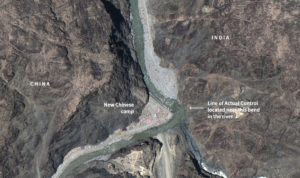China Unsolved: The Cop Killer of Harbin City

This is the final installment of China Unsolved, a The China Project series profiling China’s most notorious unsolved mysteries.
Between 1987 and 1988, five policemen were murdered in northeast China, their cases unsolved to this day. The legend of the Cop Killer of Harbin — was he a populist “hero” or a demented serial killer? — is told to this day, with rumors bleeding into facts.
Images by Katie Morton

Did a crusading killer launch a vendetta against Harbin police in the late 1980s, dispatching scores of corrupt cops before disappearing into obscurity? Many people in the grimy northeastern city still believe so, yet the facts of the case have been obscured by age, evidence, and popular culture.
Shi Aidong 施爱东, a researcher at the Chinese Academy of Social Sciences who specializes in folklore, says that while posts on the case number in the millions, “in the official files, there are almost no viable clues” that support any of the online speculation. Pan Tao 潘涛, a veteran of the local People’s Armed Police for over 30 years, recalls the murders well, and scoffs at some of the numbers cited (“54 victims”…“a massacre of 27”).
According to Pan and others, the legend of the “Hulan Hero” (呼兰大侠 hūlán dàxiá) is rooted in the still-unsolved murders of at least five policemen and their family members, between 1987 and 1988, in the city of Harbin and outlying county of Hulan, about an hour’s drive away. The first to die were policeman Zhang Fugui 张福贵, his wife, and two children, killed on June 6, 1987, by an unknown intruder who broke into their home after dark with a hatchet; another daughter was injured but survived.
In October, policeman Ma Fulin 马福林, his wife, and son, were bludgeoned to death with an axe blade in their home, just 300 meters from the Hulan County Public Security station. Two months later, on the afternoon of December 23, ex-officer Zhu Hai 朱海 was shot twice outside the home of Hulan police deputy director Dong Chao; because of the location, and the similar ages of Dong and Zhu, police believed that the real target was Dong (who has since died of old age). The murders of two other policemen — Bayan county’s He Ruichen 贺瑞忱, on October 12, 1987, and Harbin city’s Wang Yufu 王余馥, killed in Nangang district on September 28, 1988 — were also suspected to be connected.
Another incident, in which the home of a correctional officer called Jia Guanjiao 贾管教 was broken into before the assailant fled, is likely the work of the same person, police believe. Pan Tao believes the killer was around 35, strong and able-bodied, may be one-handed, probably used a bicycle to effect his getaway, and was likely a recidivist with a long history — leaving the Ma’s bungalow under cover of a June night, the killer even turned the tap on a water tank and allowed the family’s duck and geese to run amok so that the scene was already contaminated by flooding and fowl when investigators arrived.
This, as well as the victims’ professions, led some to believe the suspect worked in law enforcement and had at least training or experience of police procedures (foreign experts agree that serial killers rarely choose high-risk targets like police or journalists, preferring victims and situations they can easily handle). A task force sent by the Heilongjiang provincial public security bureau set up night patrols and fingerprinted thousands of locals, including county police, but turned up nothing.
It was the shocking nature of these murders, their closeness in timing and location, that helped spread rural rumors into urban legend, according to Shi Aidong. As mainland police maintain tight secrecy over information, particularly involving unsolved cases, “all kinds of speculation, analysis, and false impression is widely disseminated as ‘insider information,’” says Shi, who believes that, contrary to the populist image of the killer as avenging angel, the “Hulan hero” is simply a “perverted murderer.” Lu Jianzhong, current head of the local police, says that the case has become so well known, every new director has a crack at the files.
But the evidence inside them was scarce even at the time, explained one 60-year-old officer: There were no forensics, meaning officers relied on their own eyes and experience, no surveillance footage, and certainly no computers to process the data. Most of those involved in the case have retired, moved on, or died. The killer would be in his late 60s now, if still alive. Did he die in an accident? Was he jailed for other crimes in the meantime? The answers are buried under speculation as thick as the snow that swirls around the freezing Songhua river and remote rural switchbacks where a serial cop killer once vanished into the dark.
Archive | Previously: Road to Nowhere






